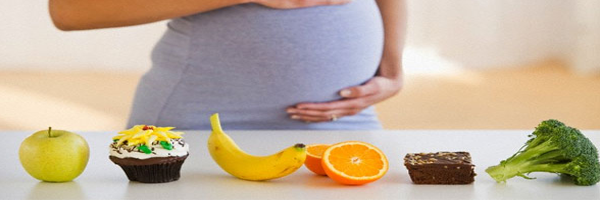| |
DIET REGIMEN FOR THE PREGNANT WOMAN |
Balanced diet is one of the fundamentals of life. Ayurveda has laid simple basic principles related to the properties, preparation, and consumption of Diet. Ayurveda emphasizes on the balanced diet of every individual in general and of the pregnant woman in particular as it provides nourishment to both mother and the foetus. Rather than stuffing the food in the stomach, eating food is considered as a sacrifices made in the sacred fire. Food during pregnancy should be adequate and include all the good properties to maintain maternal health and provide for the needs of the growing foetus. The diet should also provide strength and vitality during delivery and promote sufficient lactation.
Depending upon the digestive capacity, the quantity of food should be decided. Ayurveda elaborates the signs of completion of digestion such as blenching without taste or odor, feeling of lightness in the abdomen and in body, feeling of hunger. Pregnant woman is advised to have 4 times light meals. Avoid over eating, heavy, full stomach meals.
|

|
| |
The diet during pregnancy should be light, easily digestible, nutritious and rich in protein, vitamins, and minerals. With due consideration variation in diet as per season, area, availability, and individual taste can be made
|
Fruits- Inclusion of seasonal fruit in daily diet like apple, black grapes, pomegranate, sweet melon, mango, fig, water melon and coconut water. Sprinkle dry ginger powder over guava, banana, grapes, and chikkku. Avoid papaya, pineapple, and jackfruit.
Dry fruits- Dry fig, raisins, almond, dry dates, and black dates soaked in ghee. Take Cashew nut and pistachio in small quantity. After consulting Ayurvedic physician drink saffron milk from 5th month of pregnancy.
Pulses- Inclusion of green gram, black gram, and lentil in daily diet. Minimum use of Bengal gram, and pigeon pea is suggested. Sprouted pulses are heavy to digest and cause abdominal discomfort. Split pulses like green gram (moong dal), lentil (masur), black gram (udid dal), cow gram (chawali), rajama, sesame (til) can be used.
Vegetables- Radish, carrot, beet root, yam, white gourd, garlic, ginger, pumpkin, lady’s finger, cabbage, cauliflower, drumstick, mint, broad bean, lettuce, snake gourd, cucumber, potato, brinjal, sweet potato, simla mirchi (bell pepper), tomato, dill leaves, wash sponge, French bean, ridge gourd, onion and all seasonal vegetables.
Fenugreek leaves induce uterine contractions, similarly cluster bean, and tondli (vegetable fruit) have astringent taste with little use for brain, so are to be avoided. Other leafy vegetables provide all the fibers and nutrition.
Cereals- Wheat, rice, Indian millet (ragi), corn (maka), and jowar can be included in the diet as per availability and individual taste. Bajara promotes dark complexion and hence has to be avoided.
The diet should consist of plenty of milk and milk products in addition to the principal food.
|
Diet Schedule Of The Pregnant Woman According To Garbhasanskar |
| |
Time |
Diet |
Morning |
A glass of milk along with medicine of the respective month according to Garbhasanskar |
Breakfast |
Vegetable soup\ wheat roti + ghee\ upit\ thalpit\paratha+ghee |
Lunch |
Wheat roti or jowar roti + leafy vegetable. Dal + rice + ghee \ rice + buttermilk |
Evening snacks |
Seasonal fruit, a glass of milk along with medicine of the respective month according to Garbhasanskar. |
Dinner |
Dal + rice + ghee \ khichari (gruel), roti and vegetable |
After dinner |
Black raisins soup—(4-5 black raisins + 1 cup water boil in to 1\2 cup. Add ghee1\2 tea spoon.) Is recommended for constipation and hard stool twice a day before meals. |
|
The diet according to Garbhasanskar is not calorie oriented but the above suggested diet provides guide line of a nutritious diet to the pregnant woman and provides all the vital elements like proteins, carbohydrates, fats, minerals and vitamins.
|

|
SUPPLEMENTARY NUTRITION FOR THE PREGNANT WOMAN |
During pregnancy there is increased demand of calcium by the foetus for the metabolism and growth of the bones and teeth. Daily requirement of calcium during pregnancy is 1 - 1.5 gm. Daily requirement of calcium is to be fulfilled through diet and calcium supplement. One litre of milk contains 1 gm calcium. And hence in addition to the principal diet, the pregnant woman should at least take 1\2 litre of milk daily. Calcium is necessary for the pregnant woman for strong bones, teeth, hair and for lactation. Insufficient intake of calcium by the pregnant woman leads to mobilization of the calcium from the bones of the mother to meet the growing demands of calcium of the foetus. This results in osteoporosis or osteomalacia in mother, producing backache, joint pain etc.
Function of calcium
1) Gives firmness and rigidity to bones and teeth.
2) Important factor in blood coagulation.
3) Necessary for lactation.
4) Essential for the function of muscles and nerves.
5) Essential for cardiac muscle functioning.
Sources of calcium – Milk and milk products, egg, nonveg food, pulses and cereals, fruit vegetables and leafy vegetables, pulpy fruits and dry fruits.
In the body proteins make up the major part of the body tissue. Proteins provide the amino acids essential for the growth and repair of the body tissues. Proteins are necessary for growth, development and maintenance of weight of the foetus. Pregnancy and lactation require extra intake of protein. Daily requirement of proteins for the pregnant woman is 70 gm.
Functions of proteins
1) Source of energy to the body
2) Essential for growth, building of new tissue and repair of worn out tissue.
Sources of proteins – Milk and milk products, pulses, lentils, dry fruits, vegetables, fruits and soybeans.
Folic acid is also known as vitamin B-9 and is essential for the growth of new tissues. 3 – 4 months prior to conception, folic acid is advised to the woman. Daily recommended dose of folic acid in pregnant woman is 600 microgram.
Functions of folic acid
- Affects growth, lactation and appetite.
- Prevents spina bifida (congenital defect in the spinal cord).
- Essential for nerves.
Sources of folic acid – Green leafy vegetables, tuberoots, leguminous vegetables, orange, sweet lime, lemon, strawberry, tomato, shatavari, and curry leaves.
Iron is essential for life as it is necessary for hemoglobin (iron containing pigment) formation in the blood. Hemoglobin carries oxygen from the lungs to the tissues. Only a fraction of the iron present in the food is absorbed and hence large amount of iron is to be provided in the diet. During pregnancy, blood volume of the pregnant woman increases to meet the growing demands of the foetus and hence requirement of extra iron also increases. During pregnancy, iron is needed for transportation of oxygen to the mother and foetus, for respiration and for the development of blood cells in both. In the pregnant woman, inadequate amount of iron leads to anemia, weakness, recurrent infections, loss of appetite, lowered vitality and complications related to heart. If inadequacy of iron during pregnancy goes undiagnosed and untreated, it may result in blood loss during delivery, preterm delivery with delivery of growth retarded baby with low birth baby weight. On an average, 27mgm of elemental iron per day is required during pregnancy.
Functions of iron
1) Provides oxygen to the tissues.
2) Enhances immunity of an individual.
3) Sense of wellbeing.
4) Essential for growth and development.
Sources of iron – Leafy vegetables, beetroots, jaggary, dates, black raisins, apple, ragi, asparagus (shatavari), cabbage, cucumber, tommato, oats, egg yolk, oranges, almonds.
Water is the principal constituent of all the body fluids. In the pregnancy, keenly adequate amount of water and liquid diet is to be taken. Drinking enough liquid is as necessary as taking highly nutritious diet in the pregnancy for following reasons.
1) Water helps in digestion of the food and absorption of the digested foods.
2) Water is the principal constituent of the body fluids like blood etc.
3) Water is present in every cell, in the joints and in every organ of the body.
4) Water is essential for metabolic activities.
5) Water is the principal transporting agent of the body.
6) Water regulates and maintains constant body temperature.
7) Excessive intake of water may lead to water intoxication and insufficient intake or loss may lead to dehydration.
During pregnancy, constipation, piles, acidity, heaviness in head, nausea, urine infection, burning of urine can be prevented by intake of extra water (slightly more quantity than the non pregnant stage) and liquids. Liquid diet includes vegetable and pulses soup, fruit juice, vegetable juice, milk and other semi solid food. Pregnant woman is made aware of importance of drinking enough water during pregnancy.
Intake of water depends particularly on the sense of thirst. Sometimes excess intake of water is seen apart from the amount of water required for quenching thirst. Simple test to determine the amount of water required for the body is to observe the colour of urine. Normally first morning urine is dark coloured and then light coloured urine throughout the day. Dark colour urine throughout the day is a sign of dehydration and in such case requires adequate amount of water.
Water cannot be substituted by beverages or cold drinks. Drink water when thirsty, rather than taking beverages or cold drinks. Drink enough and not excess of water when thirsty in pregnancy.
Drink pure or potable water. In case of impurity, strain water through a clean piece of cloth and boil the water for 15 – 20 minutes or add chlorine drops to the water or remove impurities by alum. Contaminated, impure water is a host to water borne diseases such as cholera, typhoid, jaundice, gastro etc. These diseases are difficult to treat during the pregnancy because of limited range of medicines that can be used safely during pregnancy. And hence make sure that water is clean for drinking purposes
|
|
|
| |
|







